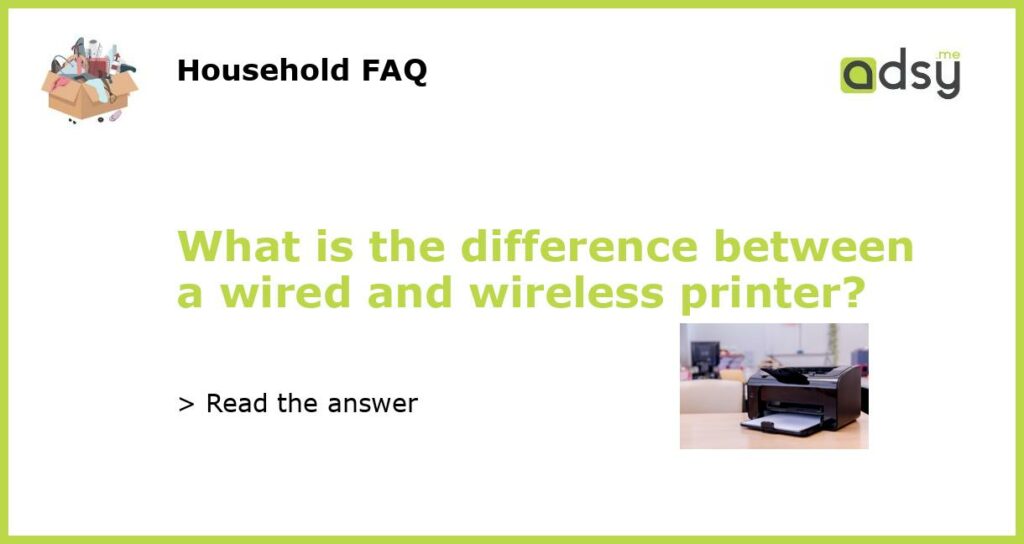Wired vs Wireless Printers: Understanding the Difference
Printers are essential tools that allow us to conveniently convert digital files into physical documents. When it comes to choosing a printer, one of the key factors to consider is whether to go for a wired or wireless model. While both options serve a similar purpose, they differ in terms of connectivity and capabilities. In this article, we will explore the difference between wired and wireless printers to help you make an informed decision.
Wired Printers: Traditional Connectivity
A wired printer, as the name suggests, relies on physical cables to establish a connection between the printer and the device sending the print job. This type of connectivity is typically achieved using a USB cable, which is plugged into the computer or other devices with built-in print capabilities. Wired printers offer a reliable and direct connection, ensuring fast data transfer and minimal chances of interference.
One advantage of wired printers is that they do not rely on Wi-Fi or other wireless networks, making them less prone to disruptions or connectivity issues. They are also relatively simple to set up; all you need to do is connect the printer to the device using a cable, and you’re good to go. Wired printers are often preferred in office settings, where a stable and secure connection is vital.
Wireless Printers: The Freedom of Connectivity
On the other hand, wireless printers offer the convenience of printing without the need for physical cables. Instead of connecting directly to a device, wireless printers utilize wireless technology, such as Wi-Fi or Bluetooth, to establish a connection. This allows for greater flexibility, as multiple devices can connect to the printer simultaneously, without the hassle of cables.
Wireless printers are a popular choice for home and small office use, as they eliminate the need for device proximity. With a wireless printer, you can print documents from any device connected to the same network, including laptops, smartphones, and tablets. This makes them ideal for households with multiple users or offices with shared printing needs.
Factors to Consider
When deciding between a wired and wireless printer, there are several factors to consider:
1. Ease of Use
Wired printers are typically easier to set up, as they only require a physical connection between the printer and the device. Wireless printers, on the other hand, may require additional steps to connect to the network and configure the settings. However, once set up, wireless printing offers more convenience and flexibility.
2. Mobility
Wireless printers provide the advantage of mobility, allowing you to print from anywhere within the range of the wireless network. This is particularly beneficial if you frequently move your devices around or have a need for printing on the go. Wired printers, on the other hand, require the device to be physically connected to the printer.
3. Network Stability
If you have a stable and reliable Wi-Fi network, a wireless printer can be a great option. However, if your network is prone to drops or slow speeds, a wired printer may be a more dependable choice. Wired connections offer a more stable and direct connection to the printer, minimizing the chances of disruptions during print jobs.
4. Security
In terms of security, wired printers are generally considered more secure because they do not rely on wireless networks. With a wired connection, the print job is transmitted directly from the device to the printer, without passing through the network. However, modern wireless printers often come with security features, such as encryption and password protection, to ensure the safety of your print jobs.
Both wired and wireless printers have their own advantages and considerations. Wired printers offer a direct and secure connection, making them a preferred choice in office environments. On the other hand, wireless printers provide the convenience and flexibility of printing from various devices without the need for physical cables. Ultimately, the choice between the two depends on your specific needs and preferences.






